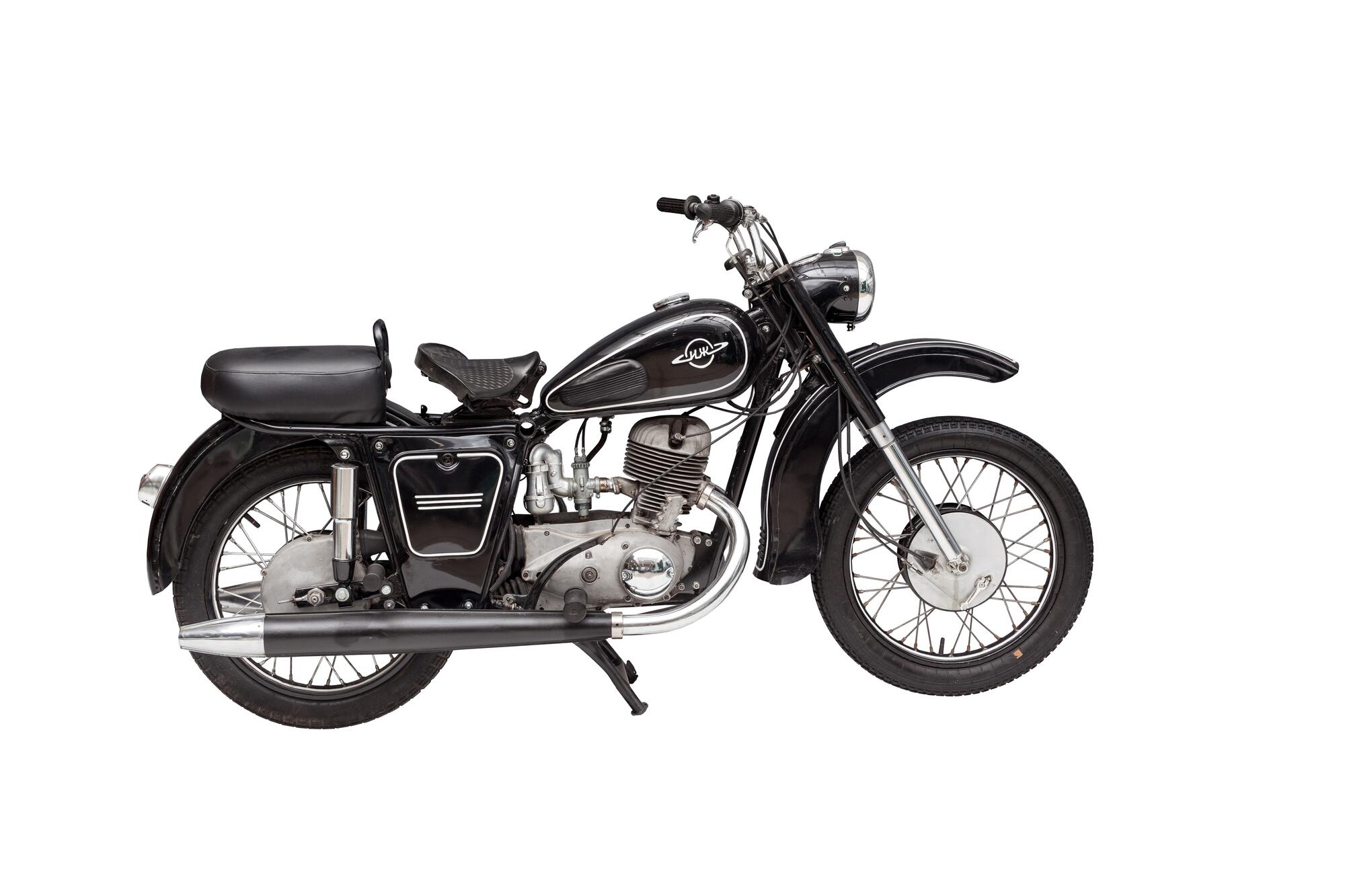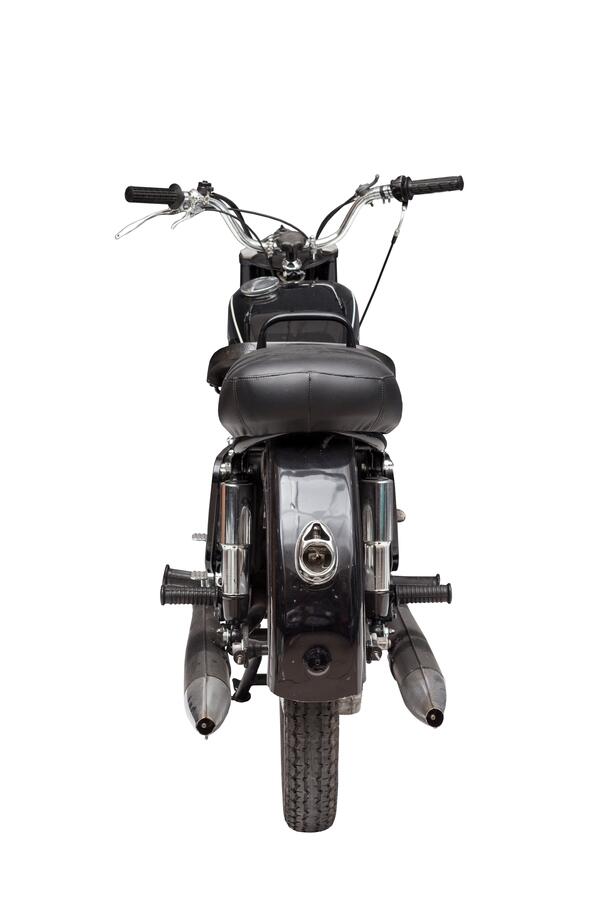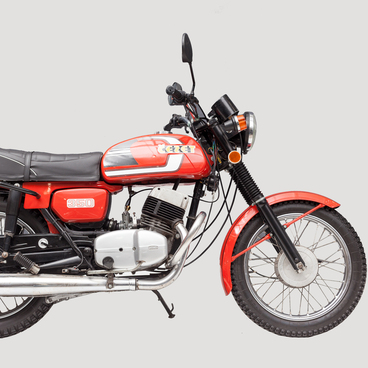In 1956, the Izhevsk Machine-Building Plant launched the production of the new Izh-56 on-road mid-range motorcycle. It replaced the Izh-49 model and was designed for riding on roads with various surfaces, both alone and with a passenger behind the rider. Motorcycles of this series were assembled until 1962.
The motorcycle had a completely new design with many changes compared to its predecessors. The engineers used a tube frame instead of a pressed one, equipped the wheels with deep mudguards to protect the rider from dust and dirt, used a sponge rubber saddle with a cover, a carburetor, and an air cleaner with protective covers. Moreover, the cylinder of the motorcycle’s engine was made of aluminum.
The new motorcycle had interchangeable wheels with straight spokes. The chain connecting the gearbox and the rear wheel was protected by a hermetically sealed cover. The engine power was increased to 13 hp.
In total, over 677,000 motorcycles were produced, with 130,000 of them equipped with a sidecar. The motorcycle was offered in two versions: with an elongated seat and two detached seats. The design with one seat was later used for all Izh motorcycles.
The Izh-56 had a medium-displacement engine. It also had a fuel tank capacity of 14 liters, and the Izhevsk Machine-Building Plant specified a fuel consumption of 4 liters per 100 km. The manufacturers recommended using a fuel/oil mix of the A-66 gasoline and oil in a 25 to 1 ratio.
The motorcycle had a weight of 158 kg, and a maximum carrying capacity of 200 kg. The Izh-56 formed the basis of many sports versions for various types of motorcycle racing. The Izh-57K was first produced in 1957 and was designed as a motocross bike. It was 18 kg lighter, and the maximum power was increased by 5 hp.
Soviet motorcycle enthusiasts were also offered the Izh-57M, the Izh-60M, and the 60-MS for several-day competitions, and the Izh-54A for road racing. The latter was characterized by having wheels of different sizes: a 19-inch front wheel and a 16-inch rear wheel. In 1962, the Izh-56 was used to develop the new Izh Planeta motorcycle.
The motorcycle had a completely new design with many changes compared to its predecessors. The engineers used a tube frame instead of a pressed one, equipped the wheels with deep mudguards to protect the rider from dust and dirt, used a sponge rubber saddle with a cover, a carburetor, and an air cleaner with protective covers. Moreover, the cylinder of the motorcycle’s engine was made of aluminum.
The new motorcycle had interchangeable wheels with straight spokes. The chain connecting the gearbox and the rear wheel was protected by a hermetically sealed cover. The engine power was increased to 13 hp.
In total, over 677,000 motorcycles were produced, with 130,000 of them equipped with a sidecar. The motorcycle was offered in two versions: with an elongated seat and two detached seats. The design with one seat was later used for all Izh motorcycles.
The Izh-56 had a medium-displacement engine. It also had a fuel tank capacity of 14 liters, and the Izhevsk Machine-Building Plant specified a fuel consumption of 4 liters per 100 km. The manufacturers recommended using a fuel/oil mix of the A-66 gasoline and oil in a 25 to 1 ratio.
The motorcycle had a weight of 158 kg, and a maximum carrying capacity of 200 kg. The Izh-56 formed the basis of many sports versions for various types of motorcycle racing. The Izh-57K was first produced in 1957 and was designed as a motocross bike. It was 18 kg lighter, and the maximum power was increased by 5 hp.
Soviet motorcycle enthusiasts were also offered the Izh-57M, the Izh-60M, and the 60-MS for several-day competitions, and the Izh-54A for road racing. The latter was characterized by having wheels of different sizes: a 19-inch front wheel and a 16-inch rear wheel. In 1962, the Izh-56 was used to develop the new Izh Planeta motorcycle.





